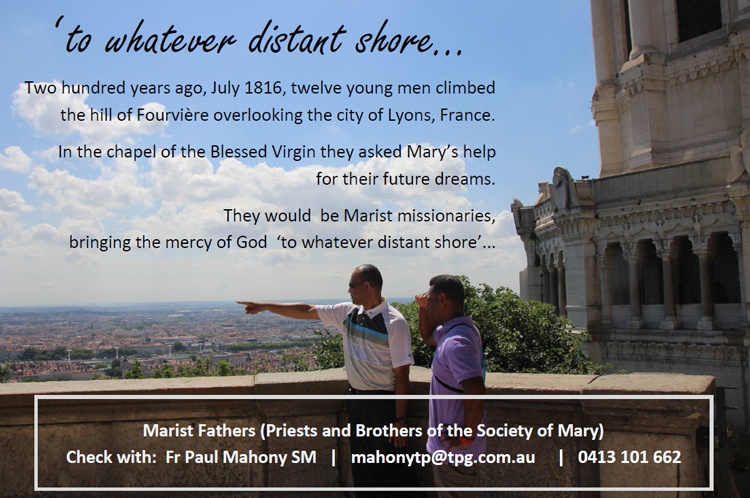In December 1967 – about a year before Thomas Merton was accidentally electrocuted by a faulty fan while attending a conference in Bangkok – he gave a retreat to a group of contemplative nuns at the Cistercian Abbey of Gethsemani in Kentucky. What he said in that conference nearly fifty years ago is as fresh and relevant now as it was then:
Presence is what counts. It’s important to realise that the Church itself is presence and so is the contemplative life. Community is presence, not an institution.
We’ve been banking on the ability to substitute institution for the reality of presence, and it simply won’t work. (Thomas Merton – The Springs of Contemplation: A Retreat at the Abbey of Gethsemani, Ave Maria Press, 1992, 17.)
Fr Jean Claude Colin (1790-1875), Founder of the Marist project in France in the 19th century, knew, 150 years earlier than Merton, the critical significance of presence. When Fr Colin felt a particular need for guidance, strength, light or courage, he sought the presence of Mary, most especially at Nazareth:
I place myself in the home of Nazareth and from there I see all that I have to do. (July 25 1870)
At various times Fr Colin returned to this theme:
Our spirit, the spirit of the Society, do you know where you can find it? For me, I find it entirely in the home of Nazareth. (September 11, 1853)
Let us look to Mary in everything, imitate her life at Nazareth. (September 3-10, 1854)
All of you should have but one spirit, that of the home of Nazareth. (August 5, 1870)
Fr Michael Fitzgerald SM writes:
For Colin therefore, Nazareth is not simply another symbol of the interior life or of a contemplative lifestyle. It is rather a symbol of Marian consciousness. It is a symbol of the call to enter into the mystery of Mary and to adopt her perspectives, her viewpoint. Nazareth, with all that it implies, the silence, the humility, the attentiveness to others, the selflessness, the modesty, is a place which we are called to enter. It is there that we discover whether or not our perspectives, our values, our priorities, what is in our heart and mind, resonate in empathy with those of Mary. It is a call to take on Mary’s own consciousness and then for ourselves to enter constantly into our own consciousness and from there view our thoughts, actions, judgments, and decisions. (Michael Fitzgerald SM, A Marian Consciousness (Maristica – Textus et Studia 5, 1991), 64.)
The Angel Gabriel’s parting words to Mary are significant:
…. nothing is impossible to God. (Luke 1:37)
Mary’s parting words to the Angel Gabriel are similarly significant:
I am the handmaid of the Lord …. let what you have said be done to me. (Luke 1:38)
The great deeds of God continue to be done in and through Mary. No wonder Fr Colin was supremely confident that, just to be in her presence is transforming. Further, a human presence transformed in this way will in turn become a transforming presence.
This kind of presence is a work of grace. It develops through constantly placing oneself at Nazareth, waiting in silence and contemplation, “catching” the mood and atmosphere there and bearing it to the Church and world.
In the Letter of Fr John Jago SM (Superior General) of 1986, “Mary Mother of our Hope”, we read:
In the mind of the Founder the Society’s mission, was to bring a new presence and influence of Mary to the Church. Lay men and women were to be involved in the pursuit of that mission ….
